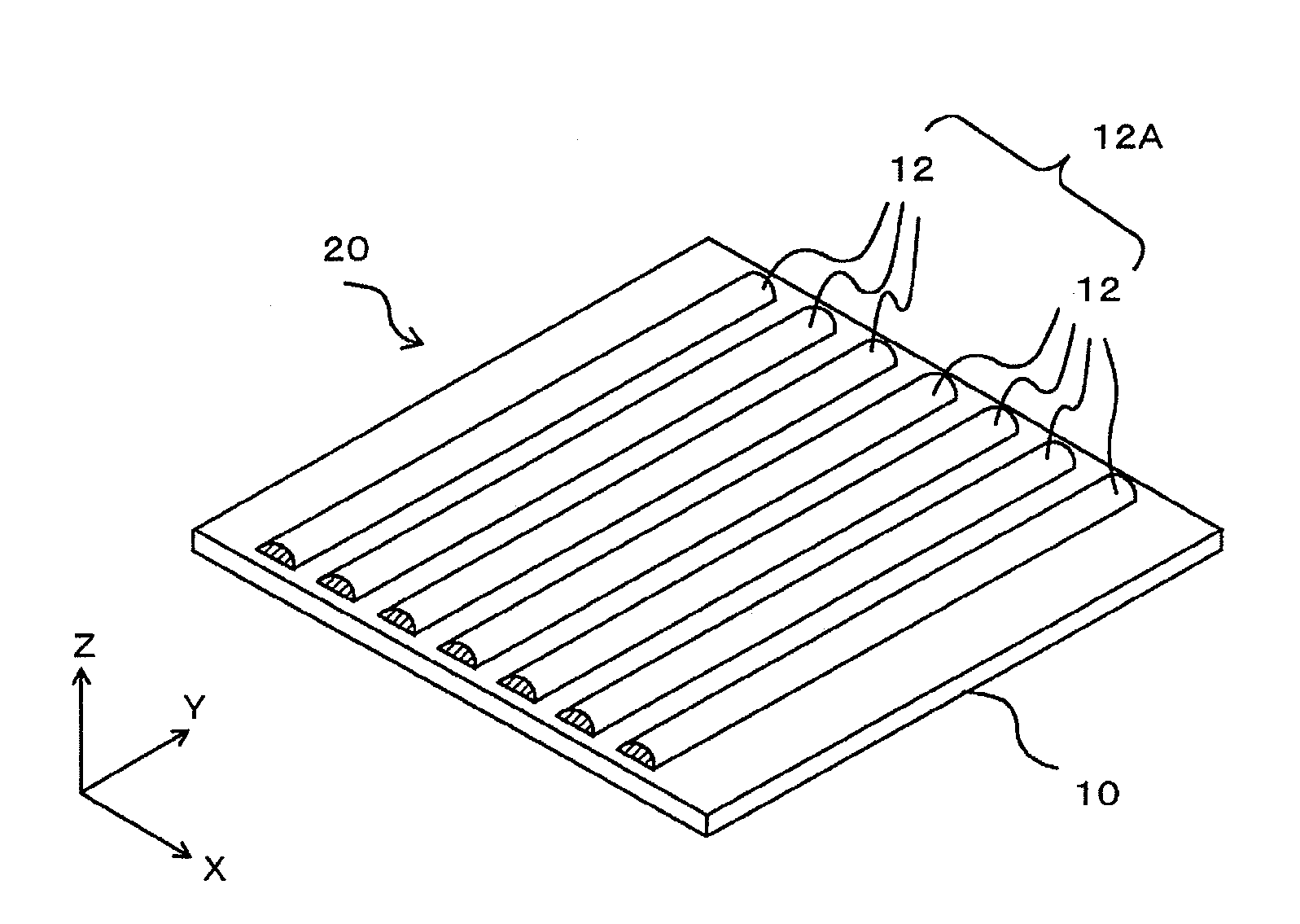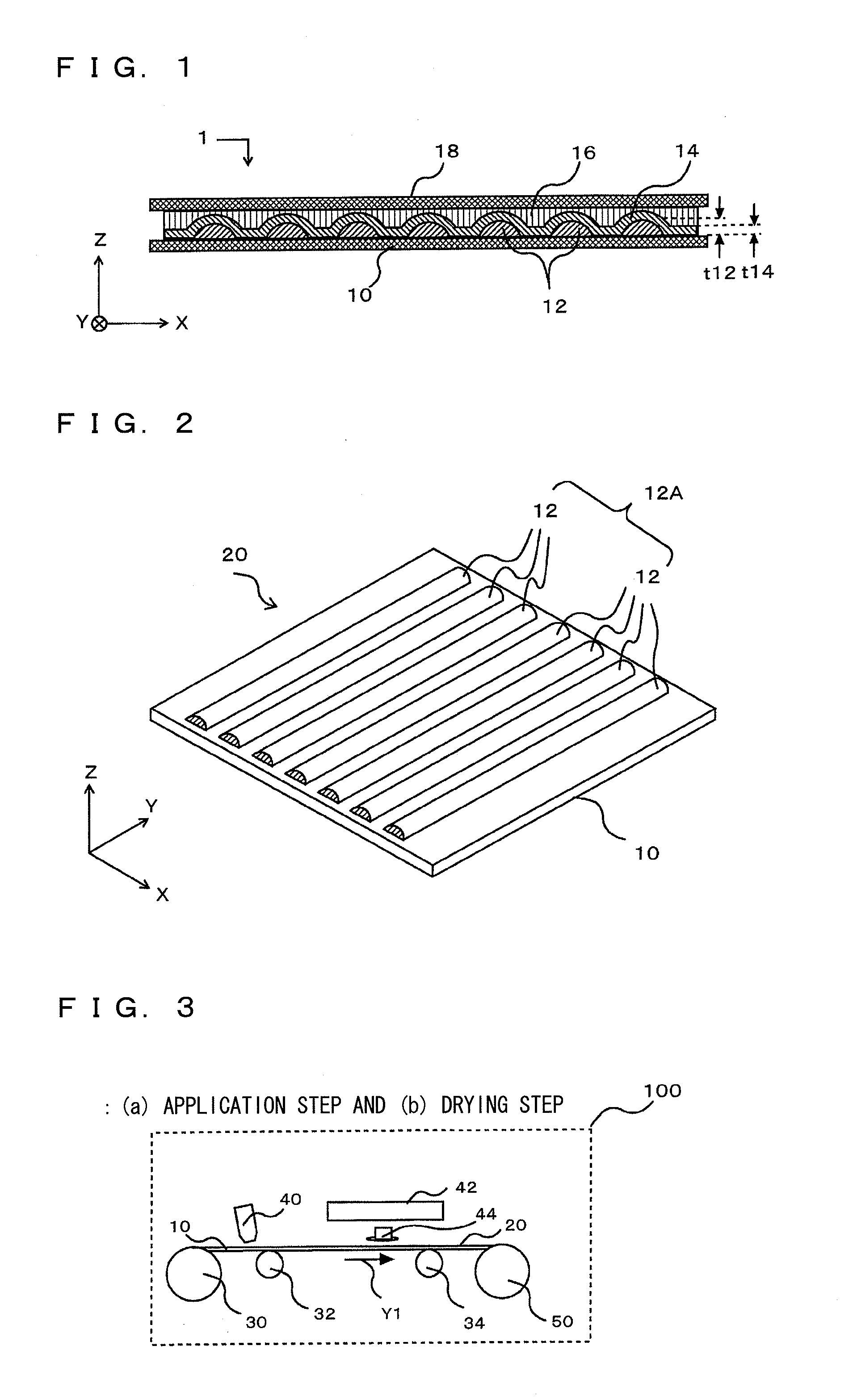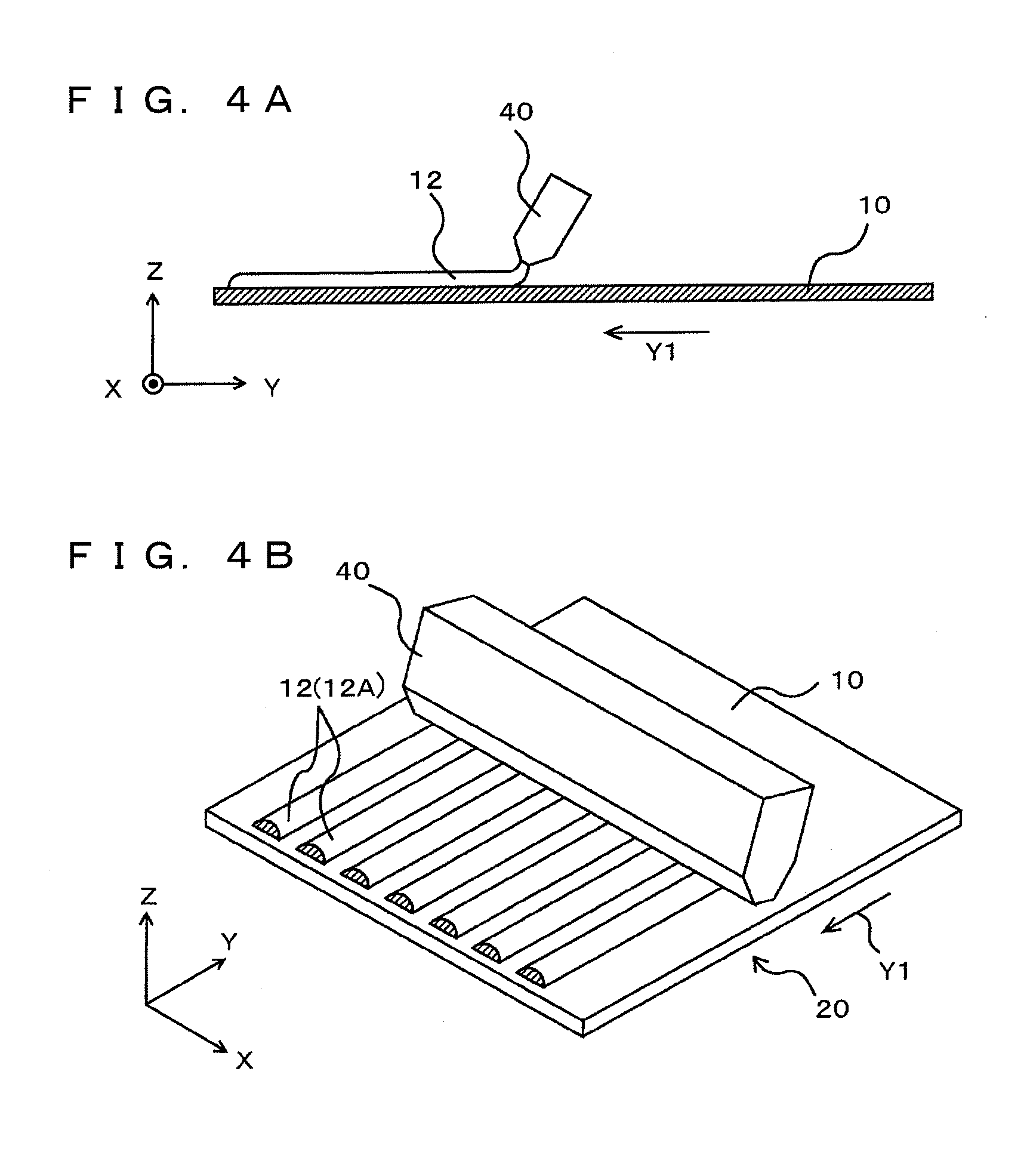Method for manufacturing electrode for battery
a manufacturing method and battery technology, applied in the direction of liquid surface applicators, cell components, coatings, etc., can solve the problems of press work being forced to be skipped, the volume of powder mixture and active material is reduced, and the charge/discharge speed of a lithium ion secondary battery is limited, etc., to achieve the effect of improving the filling ratio, reducing the volume of powder mixture and active material, and reducing the viscosity of the obtained slurry active material
- Summary
- Abstract
- Description
- Claims
- Application Information
AI Technical Summary
Benefits of technology
Problems solved by technology
Method used
Image
Examples
example 1
[0100]A powder mixture obtained by uniformly dry-mixing lithium titanate (LTO) and acetylene black (AB) at a ratio by weight of 8:1 was put into a bag made of polyethylene (PE). This bag was subjected to pressing under the condition of 30 MPa for 6 minutes with the use of a hand press. At this point, the powder mixture was hardened.
[0101]Next, the hardened powder mixture was taken out of the bag, crushed, and then mixed with polyvinylidene fluoride (PVdF) so as to achieve a ratio by weight of LTO:AB:PVdF=8:8:1, and then, so as to achieve a desired viscosity (50 Pa·s to 100 Pa·s), stirred and mixed for 30 minutes with a planetary centrifugal mixer with the addition (40 weight %) of N-methyl-2-pyrrolidone (NMP) to prepare a slurry active material.
[0102]Then, the slurry active material was applied onto a current collector (aluminum foil), and dried under the conditions of 80° C. and 120 minutes to form an active material layer. In this way, the present invention was used to prepare an ...
example 2
[0107]A powder mixture obtained by uniformly dry-mixing lithium titanate (LTO) and acetylene black (AB) at a ratio by weight of 8:1 was put into a bag made of polyethylene (PE). This bag was subjected to pressing under the condition of 30 MPa for 6 minutes with the use of a hand press. At this point, the powder mixture was hardened.
[0108]Next, the hardened powder mixture was taken out of the bag, crushed, and then mixed with polyvinylidene fluoride (PVdF) so as to achieve a ratio by weight of LTO:AB:PVdF=8:8:1, and then, so as to achieve a desired viscosity (on the order of 4000 Pa·s), stirred and mixed for 6 minutes with a planetary centrifugal mixer with the addition of N-methyl-2-pyrrolidone (NMP) to prepare a slurry active material.
[0109]Then, the slurry active material was applied onto a current collector (aluminum foil) so as to provide a structure as shown in FIG. 2, and dried under the conditions of 80° C. and 120 minutes to form linear active material layers. The dimensions...
PUM
| Property | Measurement | Unit |
|---|---|---|
| pressure | aaaaa | aaaaa |
| pressure | aaaaa | aaaaa |
| pressure | aaaaa | aaaaa |
Abstract
Description
Claims
Application Information
 Login to View More
Login to View More - R&D
- Intellectual Property
- Life Sciences
- Materials
- Tech Scout
- Unparalleled Data Quality
- Higher Quality Content
- 60% Fewer Hallucinations
Browse by: Latest US Patents, China's latest patents, Technical Efficacy Thesaurus, Application Domain, Technology Topic, Popular Technical Reports.
© 2025 PatSnap. All rights reserved.Legal|Privacy policy|Modern Slavery Act Transparency Statement|Sitemap|About US| Contact US: help@patsnap.com



